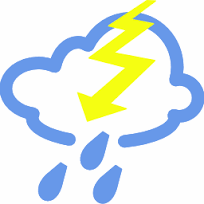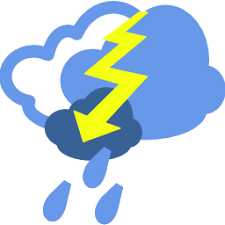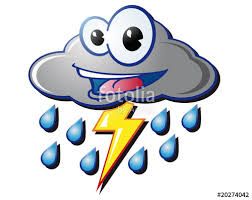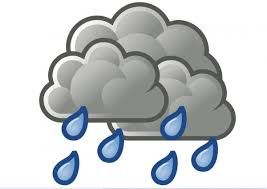Best Sanitation Innovations in Africa
Published on by Miriam Mannak, Sustainable development journalist in Technology
I am a sustainable development journalist based in Cape Town and I am working for Grid Arendal, a Norwegian environmental sustainability organisation that works closely with UN Environment and other partners.
I am looking at simple and effective innovations that tackle access to sanitation and improve overall sanitation in the developing world.
Think about the algae-based wastewater treatment method by the CSIR or Micromune by Sanitation World. What about waterless sanitation innovations?
Ideally, I am looking for innovations and technology developed in Africa, but it is not a prerequisite, as long as it is used/can be used in Africa.
I would love to hear from you (and interview you, if possible).
Which sanitation innovations applicable in Africa do you consider best?
Taxonomy
- Rural Water Supply & Sanitation
- Sanitation
- Sustainable Sanitation
- Water & Sanitation
- Waterless Sanitation
- Sanitation & Hygiene
- Sanitation & Hygiene
- Water sanitation
- Sanitation and Hygiene
40 Answers
-
Hi Miriam Mannak , you may be interested the work Jack Sim is doing.
It is mainly focused on promoting the importance of sanitation, but it still may be of interest to you - Sanitation Conversation with Jack Sim, WTO and World Toilet Day Founder -
Hello Dr. Miriam Mannak




THE RAIN IS FORMED IN 7 PHASES, NOT 3.
-https://pdf.lu/lsu5/ details in one page (EN.FR).
"Lightning + thunder + rain = one operation"
You will find the essence of what I advance as hypothesis in this message.HOW THEN ?
1- EVAPORATION
2- DECOMPOSITION of water vapor by photolysis (UVC: ultraviolet solar radiation of type C)
- http://www.u-helmich.de/bio/lexikon/P/photolysis-wasser.html
- http: //biologiedelapeau.fr/spip.php mot162?
- www.google.dz / search? Q = photolysishv + H2O → ↖H2 + O↗
↖H2 (2/29 = 0.068) and
O↗ (16/29 = 0.551),
All 2 lighter than the air, they escape in altitude, the lightest one will place the highest one.3- COMPRESSION (ascending and descending air currents - Opposition of 2 mechanical forces).
4- IONIZATION under the effect of solar radiation, stirring and friction due to compression (all ionizing agents).
H2 → (2H+) + 2é-
(called positive cloud) and
O + 2é-(called negative cloud).5- EXPLOSIVE SYNTHESIS
(O + 2é-) + 2H+ → H2O + lightning + thunder (the cloud is born, it is only there that one can speak of condensation).6- CONDENSATION
7- RAIN.
The enigma flash + thunder-cloud-rain is resolved.
Algeria-Tiaret-Saida-Hounet
Tel-mob: (213) 790728135
horrimok@yahoo.frIf rain water were formed as we all learned,
1- it would have rained much more during the warm seasons because the evaporation is more important than during the cold seasons.
2- A dense, permanent fog from the ground up to the height of the current clouds would have formed. If you say that water in the gaseous state is invisible, I would say that its decomposition is even more (final stage).
3- why do we expect rain when a storm is coming (lightning + thunder) if there is not an intimate relationship between lightning, thunder and rain?
The theory "evaporation-condensation-rain", has no author, do you realize? ! -
Hello, you can look up SANDEC (part of EAWAG organization in Switzerland), they conduct extensive researsh on the topic.
https://www.sswm.info/ could be a good source of info too
1 Comment
-
I’m a researcher working with microalgae for wastewater treatment and from my experience, if region is well supplied with solar irradiation - it is very good solution for biogens removal and sanitation. Problem with microalgae is their poor decantation properties. We work in Ukraine and we have same problems as in many African countries – old infrastructure, no infrastructure sometimes and no funding, so we focused on energy free, zero capital investment dewatering. https://www.youtube.com/watch?v=12LOuLGGESQ&t=14s
-
Great information
-
We are prototyping a new technology for atmospheric water generators that works at very high temperatures and low humidities www.requench.co.uk
-
We are prototyping a new technology for atmospheric water generators that works at very high temperatures and low humidities www.requench.co.uk
-
How about a web-hosted application for monitoring and analysing pump usage in remote villages to detect failure, often before it occurs, and keep them in operation for more of the time?
http://www.em-solutions.co.uk/read-news/mantis-being-deployed-in-sierra-leone#sthash.pBy0Sa2z.dpbs
Contact Louise.Walker@em-solutions.co.uk for more information
-
*I am a geo-hydrologist by training but most of my work experience has been with biocide efficacy in potable water systems as well as industrial cooling applications. I have 37 years experience in this area and have seem many mistakes in system design ans management. Too often there is a disconnect between the theoretical engineering of a project vs real world considerations. Millions of dollars have been wasted on poorly designed systems. Luckily my time has been spent "out in the field" so my theoretical background is imbued with practical knowledge. the questions you ask are broad based and defy a reply that is short of a 100 page manuscript. i have been successful in my career and am at the age when helping people is one of my goals. If you want to chat sometime or desire to talk in person, let me know, I will do0 my best to help.
My phone is 443-900-5779 and my E-mail is tsoukup65@outlook.com
-
I was in Lagos, Nigeria in 1994 and the oil pollution was rampant. The ADsorb-it Fabric Technology / Products would effectively address these pollution issues. Your contact for the ADsorb-it Technology in Africa would be Goodspeed Environmental Services in Durban and the contact person is Charles or Val Goodspeed cgoodspeed@mweb.co.za.
-
Further to Bernelle's comments below, I am based at the Centre for Agroecology, Water and Resilience, Coventry University, UK, and with Dr Kevin Winter at the University of Cape Town, South Africa, have a Royal Society grant to investigate the use of biofiltration cells to treat contaminated water from an informal settlement based at the Water Hub, near Cape Town. Bernelle gives the website in her piece. Happy to be interviewed!
-
Dear Miriam,
I am German water-well engineer and spent the half of my life in water supply projects, research, protection of aquifers, management and through different organizations like voluntary service, industrial unconventional oil and gas, mining, EU-HCP etc. emergency water supply for refugee camps, creation and reinforcement of several oasis, innovative and small scaled groundwater infiltration (artificial groundwater recharge) in floodable Wadis and dried-off river beds (including villagers participation) and I ended up with the constrcuction of a helicopter transportable drilling rig which is able to drill down to 250m in any kind of geological formations and: my actual and most important innovation is an international operative and mobile waterwell drillng school. This was created (with many requests) due to the fact, that only rare expwerts are able to drill a water borehole. Everything is theoretically explainable, but in reality, in the field, not reliable and possible to realize. The hundreds of written, high standarized books and manuals, are for those who are standing beside the operation (as supervisor) and giving certain advises, due to their role, and it is the drilling operator, who has be used to it: and also be couraged enough to say: "No my friend, if we do as you have readen, the hole will collpse, the well will produce sand, the well will alterate in a few month etc. etc.
And most of drillers are not analphabetics, but transitioning the methods from reading into practizing, is another important act. In Germany, there is a 3.1/2 years apprenticeship required, before touching a rig, before tdealing with groundwatger. There is a reason for it, isn't it?
So, I sat down and spent my time to create a formal training-practizing-training sequenced in school lessons and to learn-on-the-job. In other words: The training comes from somebody, who knows exactly what is happening in the driling operator's mind.
2 weeks to become professional. Isn't this innovative? A gap to fill? How many million €'s and $'s were spent on failed water supply projects, never reported, never considered. And the beificiaries are running back to the water source, moving house into other regions, ending up in the suburbs of cities, because at least, there is potable water to find...it seems that the circle is closed here....
Kind Regards
Ulf
-
Hello Miriam, being mediator in sustainable innovative technologies I'm already busy for Africa with all kind of solutions. Maybe a good idea to contact?
nico groen
Arsani Consultancy
-
Ponds system is the best practice moreover in Africa, due to the fact that of African continent are poor. The wastewater will gravitated and no energy will required, again the other good sanitation practice will be urine diversion system (UDS) this will be good for every where peri-urban and rural area.
-
Hi Miriam, I work with the Future Water Institute and do research on resource recovery from wastes, which has brought me closer to sanitation.
More info: http://www.futurewater.uct.ac.za/FW-WWBR and http://www.futurewater.uct.ac.za/FW-sustainable-sanitation
On a personal note I have a UD compost toilet in my house to test it as a viable alternative and to learn about bioprocessing of the solid product.There is also the Water Hub that aims to test innovations in real world context: https://www.thewaterhub.org.za/
Isidima has been mentioned, they do good work on multiple scales/aspects and is one of the partners at the Hub: https://www.isidima.net/
Other innovations may be available through the WADER programme: http://wader.org.za/A recent conference brought many of the people working in this field together: http://periurbanconference2017.org.za/programme/
Then, we are working with Sanergy in Kenya that seems to have a very good approach to the whole system: http://saner.gy/
Chris Buckley's group is also doing great work: http://prg.ukzn.ac.za/
Lastly, I agree with the comments from Barry Jackson.
I am also based in Cape Town and would be keen for an interview, and look forward to following your work :)
-
Hi Miriam, sounds like a great area to be involved with. I am working on development of an STP and WTP in a regional area in NSW Australia. They have implemented an Advanced Water Recycling Facility to treat effluent from the STP for non-potable use (irrigation)- almost fully operated with solar PV. Integration of solar can significantly reduce pumping and treatment costs - happy to provide further detail if you like. The project has won many awards and obtained funding and is also obtaining a Sustainability Rating via ISCA.
-
Worlds First Planetary Restoration Systems. www.aquagen-isi.ws My e-mail is bbs@aquagen-isi.ws Wastewater treatment is dead, resource reclamation, reuse and circular economic value is the new direction.
-
interesting
-
Dear Miriam, I have the Clarus Fusion STP which uses very little power and all the the grey water is reused for irrigation etc. Please see www.maskamwater.com and let me know your opinion. This product is in use in many Sub- Saharan countries and in the UAE. Maskam Water, owned by Gerhard Cronje, is based in Brackenfell Cape Town. (I do agree with the post from Barry Jackson)
Regards,
Chris.
-
Have you considered floating wetlands as a treatment option?
-
Have you considered floating wetlands as a treatment option?
-
Dear Mariam,
Kindly see in the attached our experience in "low cost wastewater treatment and reuse'.
-
Dear Miriam, You will receive much advice from enthusiasts and those with something to sell. Over my professional career I have needed to sift through many such glowing promotional presentations etc. I have a couple of thoughts on how to begin to sort them out. Bearing in mind that a sanitation system must be technically and environmentally sustainable, affordable and replicable without excessive external support.
On ecosan solutions I did a review some years ago entitled " A Review of Ecological Sanitation Technologies in East and Southern Africa, WSP-AF Field Note, ©January 2005" https://www.wsp.org/sites/wsp.org/files/publications/af_ecosan_esa.pdf
The key item for your immediate information is a set of criteria I used "to sort fact from fiction": "Four measures of acceptance are proposed: 1. Are the toilets still in use? 2. Are they being correctly used? 3. Are they being copied without external support? 4. Are EcoSan products being used in agriculture?"
On other "solutions" offered to solve South Africa's sanitation challenges I produced another set of criteria that included: a. total capital cost, b. running costs, c. moving parts? d. water dependent? f. how is sludge managed? g. institutional arrangements needed? h. familiar technology or understandable by target clients? and i. are they spontaneously copied by neighbours without subsidies?
I hope this helps your search for the best technology. Regards, Barry Jackson, ex DBSA, ex-WSP, ex Global Sanitation Fund.
-
Hi Miriam,
There is a company called Isidima Design and Development situated in Cape Town that has developed a low-flush toilet for both developed country and developing country use called Arumloo. Envriosan is also South African and has developed a pour-flush and low flush toilet in plastic. There is also the company, Enviroloo that has a composting dry toilet technology, they are also South African. The Earth Auger was developed in Washington, but is definitely applicable to the African context. The Earth Auger is a UDDT (urine-diverting dry toilet) that moves the dry waste away from the toilet site using an auger. There is a the Arborloo that was developed in Zimbabwe, but this is better for rural contexts as it involves using a pit and then moving and planting a tree in the spot where the pit has filled. These are the toilet technologies, although with the enviroloo and the Arborloo, it is a treatment (using composting) and storage solution as well.
I know the Isidima Design and Development has also worked with ecological water treatment using John Todd's Eco-Machine, but this has not been done on domestic wastewater yet.
If you contact any of these companies I am sure they will know more about the innovative treatment options used.
-
We are sustainable water engineers based in Scotland.
The Sustainable Water Company Ltd
We support Scottish Water to meeting their Carbon obligations.
Using Wetland Technology namely Reed Beds we have brought to the attention of SW the ability to keep costs down while meeting regulatory requirements. We have always dreamed of working to support developing communities. Especially SA where there have been some developments to date
Derrick Emms.
-
We manufacture the ADsorb-it Fabric / Product line that is made from recycled waste fibers from the textile manufacturing industry and our ADsorb-it Products effectively remove (wick) oils from water down to approximately 2 to 4 Mg/L. Oils retained in the in the ADsorb-it Fabric Fiber Matrix can be physically removed from the fabric and the oils re-processed / reclaimed and the ADsorb-it can be reused indefinitely. www.eco-tec-inc.com
-
-
Dear Miriam,
Please go to http://geoflow.com/wastewater/
I grew up in Cape Town and founded Agriplas many years ago. I left South Africa with my wife and four children in 1972 as we could not bring up our children under apartheid. Under the desperate drought conditions I know it is needed and would love to bring this technology to the Cape and to South Africa. Working with Agriplas we could do so quite easily but they need motivation. Any ideas?
Regards,
Rodney
-
Go look at www.ecosan.co.za Not sure if the product was developed in Africa, but they have a system where the human waste is dried and converted into compost.
2 Comments
-
Yes, I have seen the Enviroloo and it is really incredible. Uses NO water, produces no odour, solid waste only has to be removed very infrequently and the waste is already compost that can be used immediately. I can't understand why we still flush toilets with dining washer in South Africa when we are living in an arid region. Insanity!
-
Or Google the name Enviroloo
-
-
Hi Miriam, I am a water practitioner with +20 years experience, focus on small systems and have had the privilege of travelling across Africa and Indian Ocean Islands, coming into contact with various and sometimes similar needs - seen a lot of international and local technologies succeed and fail, I will be more than happy to meet for coffee and a chat, you are welcome to email me on gary@dikubu.co.za
Regards
Gary
-
Thank you for reaching out.
I am the founder of HandyShower.
The main idea behind the project is to help those living in the developing world, where sanitation conditions are often not very good and every drop of water is precious. HandyShower is an innovative 3-in-1 personal hygiene system that, thanks to its interchangeable nozzles, can function as a faucet, a bidet and a shower. Moreover, it is equipped with a patented self-closing valve which facilitates water conservation. Moreover, the solar water bag that is included in the HandyShower kit can serve as a water container. The device is compact and really easy to use. You can find out more on our website http://en.handyshower.pl/
I believe that HandyShower can really make a difference for people living in Africa and other water-scarce areas.
If you are interested in interviewing me, I would be happy to answer your questions.
Best,
Zdzisław Iwanejko
1 Comment
-
Hi Zdzisław, I'd love to talk to you. Could you please email me so we can talk further? miriam@africajournalist.org.
Thanks!
Miriam
-
-
If interested nature already has everything you need to clean the water, metabolize the waste, grow food, and with a little assistance make electricity. This technology is called BIOREMEDIATION. The specific species of microbe required for these biological functions is called Archaea. Sometimes the cutting edge technology you are looking for is already here.
1 Comment
-
Hi there,
I would love to hear more! Would you please drop me an email (miriam@africajournalist.org) so we can arrange a skype/email interview?
Thanks so much!
-
-
Hi Miriam,
We suggest an in tank or drain treatment system which needs no power and uses only microbes and enzymes. One application takes care of the toilet for an year.
I can provide more insights into this if it is of interest to you. No CapEx less land and high efficiency no operational costs involved.
1 Comment
-
Hi there,
I would love to hear more about this. Would you please drop me an email (miriam@africajournalist.org) so we can arrange a skype/email interview?
Thanks so much!
-
-
Assuming that the soil conditions are not all sand and have some type of blend of clay and other materials why not utilize land application for the treatment of regular human waste/wastewater. (if you google Land Application of Wastewater) it will give you the required soil conditions for this treatment method). This method would recharge the nearby aquifer. To treat the ground water in the aquifer for drinking may I suggest an ultrafiltration system. These systems are now modular and provide good consistent water quality. May I also suggest duplicity in design so that backwashing of the unit and other maintenance activities can occur on a regular basis.
Regards,
Gary
1 Comment
-
Thanks, Gary! I would love to chat to you about this. Would you please drop me an email, if possible? miriam@africajournalist.org
-
-
RBC is the best system for Africa. Its low tech, low maintenance, low energy requirements, low sludge production, small foot print and consistency of treatment to high standards make it perfect for rural and larger community projects
1 Comment
-
Hi Tony,
Would you please drop me an email at miriam@africajournalist.org? I would love to chat with/interview you.
Thanks, Miriam
-
-
Hi Miriam, I visited a site in East London area. They have a self fashioned septic bio filter system. It was working very well and is an excellent model for villages and homesteads. The system takes all the effluent from the toilets and uses plant based chambers to metabolize the black water. Similar to John Todd's living machines. I was just in Amsterdam with John last week.
Contact me for site contact information.
Another system is similar to the John Todd strategy based living machines. These are all over the world combining dry compost toilets and water purifying chambers for the grey water. There is no black water in this system. The best system I've seen is in Alaska.
Sanitation in Africa begins at the source and delivery system. The facilities built into the houses needs to change as does the current cultural practices. Models exist and are simple.
Always available to talk.
Daniel Halsey
1 Comment
-
Hi Daniel,
Would you please drop me an email at miriam@africajournalist.org? I would love to chat with you, if possible. Your findings are exactly what I am lookomg for.
Thanks, Miriam
-
-
Hi Miriam, you might want to contact the FutureWater Team at UCT - they have some insights in your topic of interest
1 Comment
-
Thanks Ulrike, I will do so!
-
-
Hallo Miriam, i am un Benin, s'est Africa. I'm not strong in English. Un spite of that, i'm inttested for making an interview.
Bests regards
Robert
1 Comment
-
Salut Robert,
Je parle un peut de Francais. Peut-etre on peut discuter via Skype?
Est-ce-que vous piuvez m'envoyez en email avec plus d'information? miriam@africajournalist.org.
Merci beaucoup!
Miriam
-
-
Hello Miriam
I am interested to make interview
Regards
1 Comment
-
That would be great. Could you please drop me an email (miriam@africajournalist.org) with some more information on what it is you want to talk about? Thanks! Miriam
-
-
Hi